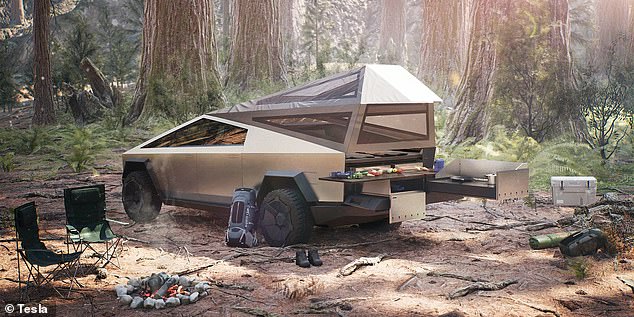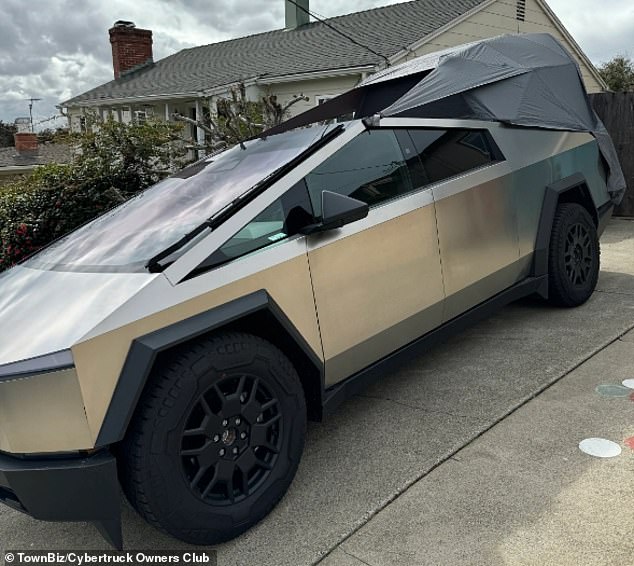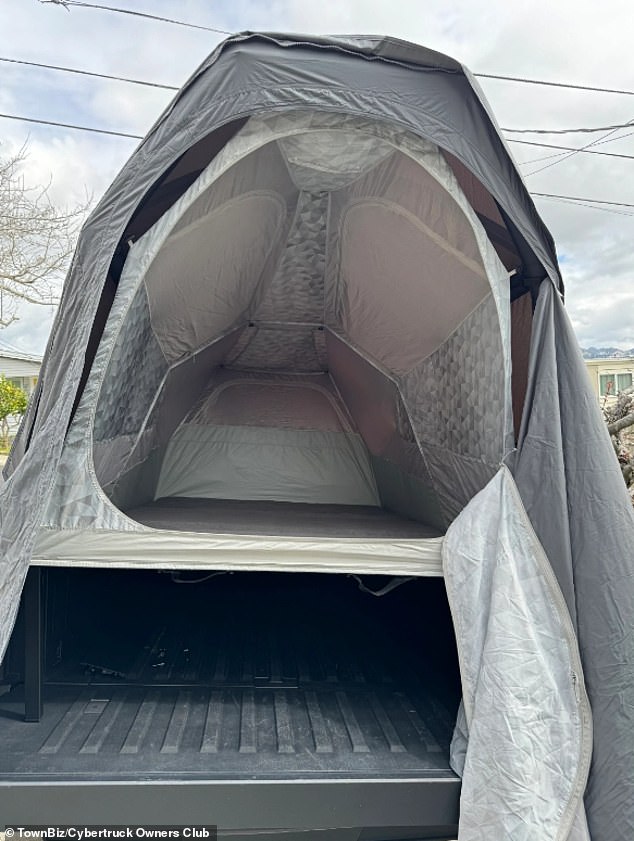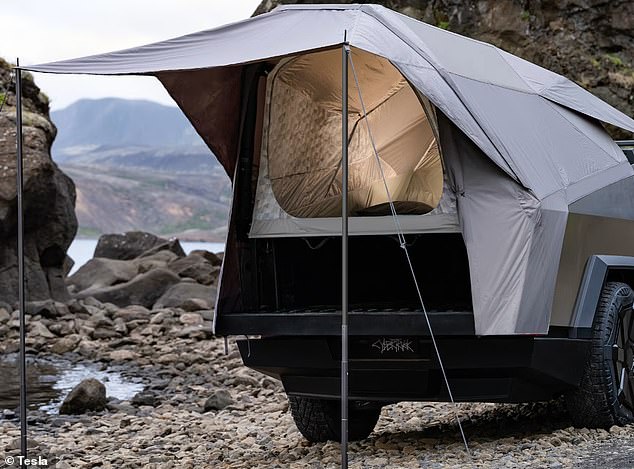Outrage as Tesla Starts Shipping a $3,000 Cybertruck Tent That Looks Nothing as Advertised
Cybertruck customers are once again outraged over broken promises after Tesla started shipping the first batch of tent mounts that leave much to be desired.
The Basecamp tent, which carries a hefty $3,000 price tag, appears to lack the allure of the company’s promotional photos, including an “ultra-soft mattress” and “enhanced camping experience.”
Advertisements of the Basecamp tent claimed it would attach evenly to the back of the Cybertruck, and a video shows two parents and a child fitting comfortably inside the tent and screened windows to provide “views of the stars.”
But new owners have shared videos and photos of what appeared to be a tarp extension on the back of their new EV truck, with some saying it was no different than a traditional tent and could fit up to two people.
Tesla’s Cybertruck Basecamp tent looked more like a tarpaulin than the sleek design the company promised when it advertised the attachment

Tesla released photos of its Basecamp tent when it announced the Cybertruck in 2019, promising a unique and comfortable camping experience

The Basecamp tent costs $3,000, on top of the more than $90,000 that the Cybertruck costs
“Nothing about CyberTruck’s 2019 reveal lives up to expectations,” wrote X user Dangum PI on Elon Musk’s platform.
“The reality is this is a colossal failure. That’s a shame, because it could have been revolutionary.’
Plump Pixel, a design company, also shared on X that it believes the Basecamp tent is in fact an “unpolished homeless camp.”
Tesla unveiled its Cybertruck and Basecamp add-on in 2019 and eventually started shipping the vehicle to buyers in late November 2023, but consumers weren’t able to purchase the tent until early last month.
The installation process is not as simple and straightforward as Tesla advertises, as before the buyer can use the tent, they must visit a Tesla Service Center to have a professional attach the tent brackets to the vehicle’s side rails.
The manual pump required to inflate the tent also makes it a more time-consuming process than buyers thought.
The tent should also have an auto-leveling feature called ‘Tent Mode’, which works by straightening the Cybertruck so that the person doesn’t feel like they’re sliding out of the tent when the car is parked on a slope.

The reality of the Basecamp tent (photo) looks nothing like what was expected in Tesla’s photos

Tesla advertised a comfortable sleeping experience (pictured) with a ‘high-quality mattress’

The Basecamp tent can only be installed after visiting the Tesla Service Center to attach the tent brackets
One Cybertruck owner posted his experience on the website Cybertruck Owners Club website, which calls the supposed ‘Tent Mode’ feature ‘MIA (missing in action)’.
The buyer reported that the lack of the ‘Tent Mode’ feature is “a bit of a red flag, as the rumored self-leveling element is a pretty big deal for rooftop camping.”
“As I lay briefly on the sleeping mat while parked in my gently sloping driveway, I felt myself rolling downhill.”
Although the Cybertruck user said he loves the new vehicle, he added: “The jury is still out on Basecamp as I’m not yet convinced that the brilliant elements outweigh the areas that need improvement.”
‘Tent Mode’ is an important facet of the Basecamp installation process and should be accessible via the vehicle’s touchscreen.
“It costs three thousand dollars and the instructions say to activate ‘Tent Mode’ which doesn’t exist in the car,” one person complained on X.
Cybertruck owners previously filed complaints that their $60,000 to $96,000 vehicles showed signs of rust less than two weeks after purchasing them.
Shortly after the Cybertruck was released, buyers reported developing orange spots after driving the Cybertruck in the rain for two days.
“The Cybertruck has driven 381 miles and was parked in front of my house for much of the 11 days in my custody,” one customer wrote in a Cybertruck Owners Club after.
‘Cold weather, rain and some direct sunlight later, I have attached a few photos of the corrosion spots and a video.’
While there are some positive reviews about the Cybertruck’s smooth ride, design and engineering, the verdict still seems out for some wondering whether the high price tag and lofty extra features are worth it.
